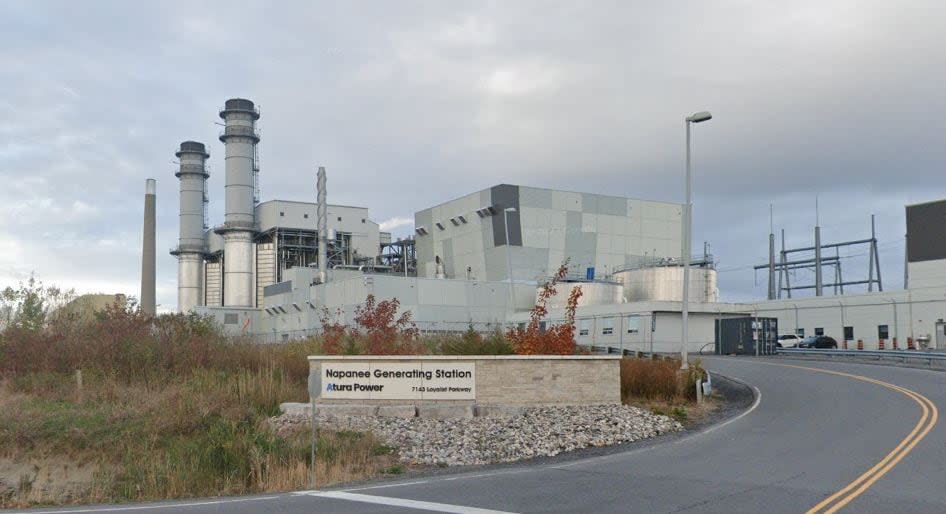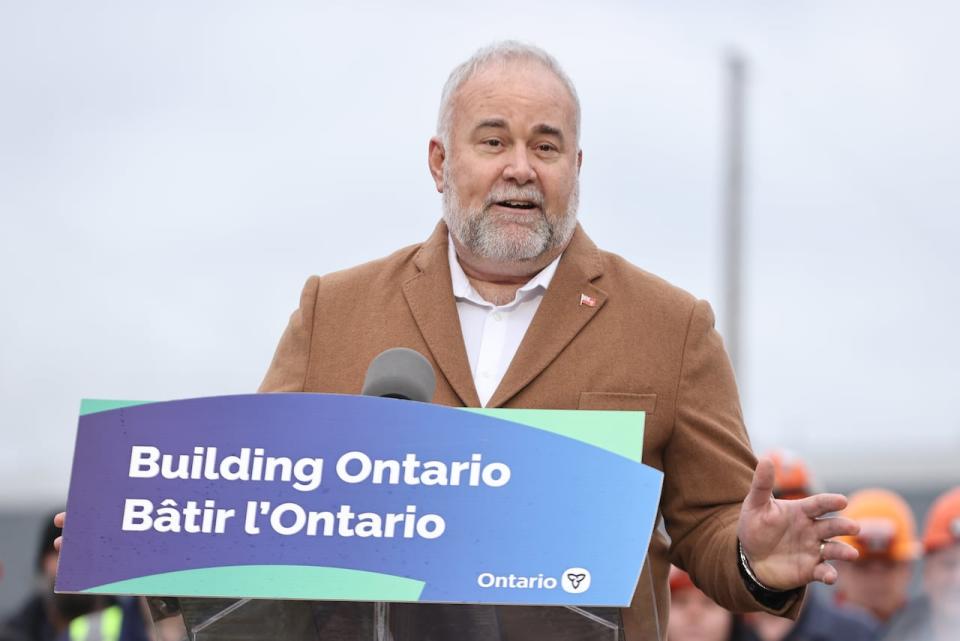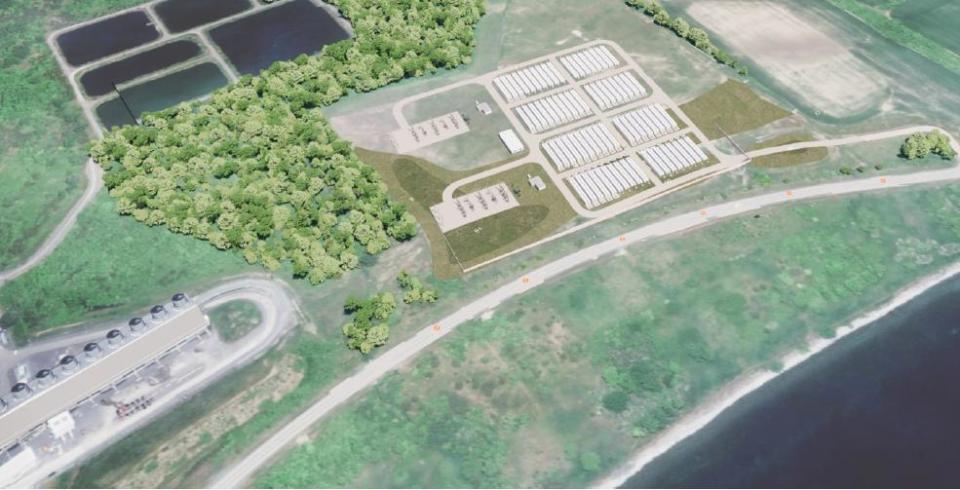Eastern Ontario gas, battery projects get approvals to go ahead

Two mammoth eastern Ontario energy projects are among 13 new electricity generation and storage facilities selected by Ontario's Independent Electricity System Operator (IESO) to bolster the province's energy supply.
The IESO approved 10 battery energy storage systems, including one in Edwardsburgh-Cardinal, Ont., the eastern Ontario community south of Ottawa where Hwy 401 meets Hwy. 416.
Battery energy storage systems collect energy from renewable sources like wind and solar panels or from the electricity network, then discharge that energy when it's needed to meet peak demands.
The facility in Edwardsburgh-Cardinal, Ont., would be Canada's largest battery energy storage system, with a capacity of 390 megawatts, surpassing the 250-megawatt Oneida Energy Storage facility under construction in southern Ontario, the ISEO said.
That plant was one of seven announced last year, including a battery energy storage facility planned for Napanee, when the province made its first move toward battery storage as a source of energy for its electricity grid as part of its larger plan to meet growing energy demands and reduce emissions.
Minister of Energy Todd Smith told CBC News last week the goal is to ensure a "reliable, affordable, clean, non-emitting power supply … that's safe."

Ontario Energy Minister Todd Smith said the 13 new projects approved will allow Ontario to meet energy demands through 2030. (Evan Mitsui/CBC)
Battery plant a stepping stone to further investment
The Edwardsburgh-Cardinal council welcomed the battery facility proposal, Mayor Tory Deschamps said, partly to make the region more appealing to a potential electric vehicle manufacturing plant. Council passed a support resolution over the facility on Nov. 27.
"We're going to do what it takes to do that and we believe that this [battery energy storage system] project will move us towards that," Deschamps said.
Beyond facilitating a possible EV plant, Deschamps said the lithium-ion battery facility would create jobs during construction and, once it's up and running, allow the municipality to build more housing by helping to create a more stable electricity grid.
The $750 million facility was initiated by the Toronto-based company Potentia Renewables. Deschamps says council negotiated that a community benefit fund be included within the township's 21-year contract with the company. That will see Potentia Renewables provide an added $30 million in revenue over the lifespan of the agreement, he said.
While Deschamps says reaction to the project has been largely positive, there are some concerns from township residents about the reliability of battery energy storage systems.
The township will hold further consultations with community members and members of the Algonquins of Pikwakanagan First Nation, who will own 50 per cent of the project under Indigenous Holding Vehicle subsidiary Skyview Holding.
Deschamps says those meetings are aimed at developing emergency preparedness and fire suppression measures to ensure the facility functions safely and efficiently.
After the consultations, construction is expected to begin in 2026 and the facility should come online in 2027.

Last year, Ontario made its first move towards battery energy storage systems approving seven plants, including one to be built in Napanee. (Atura Power)
Natural gas an 'insurance policy'
Smith said battery plants aren't the only solution to Ontario's energy needs, with natural gas serving as an "insurance policy to keep the lights on" until more storage is built in the province.
Three natural gas and biogas facilities were also approved, with Napanee, Ont., set to welcome the largest of those developments: an additional 430-megawatt turbine at its generating station.
All of the projects are expected to be online by May 2028, and Smith said they'll meet the province's energy demands into 2030.
"All these procurements are rungs in the ladder to ensure that we have the power that we need [while] ensuring that we're keeping our grid emissions free," he said.
"But as we electrify manufacturing, electrify our transportation fleet, we're going to need more."
According to an IESO report, without a limited amount of new natural gas, it would have to turn to emergency actions like conservation appeals and rotating blackouts.
Deschamps said for other municipalities, natural gas could be the key to fuelling large industrial projects, and it's up to local councils to make that decision for themselves.
In Napanee, that decision was a yes. Council voted in favour of a proposal from the Ontario Power Generation subsidiary Atura Power to add another turbine at its generating station last November.

Keith Brooks is Programs Director at Environmental Defence. (Jodie Applewaithe/CBC)
Gas a 'lazy choice,' advocate says
The Napanee project has been met by dissent from environmental advocates, however.
Keith Brooks, programs director at Environmental Defence, urged council to reject Atura Power's proposal, which came with the pledge of a community benefit fund of $4.8 million dollars over 12 years.
Natural gas, a non-renewable fossil fuel, generates heat-trapping greenhouse gas emissions, like methane and carbon dioxide, when burned. At a council meeting Nov. 14, Brooks described natural gas as a "key driver of climate change," echoing concerns raised by his organization and other environmental groups.
"The federal government has promised to deliver a net-zero electricity sector by 2035, and so building a new gas plant that's not going to come online until 2028 just doesn't really make sense at all," Brooks told CBC News last week.
Brooks said there shouldn't be a tradeoff between increasing energy supply and meeting climate commitments, especially when the government has other options.
To Brooks, the battery storage plant planned for Edwardsburgh-Cardinal is a step in the right direction. The government should also focus on harnessing its capacity for wind and solar power, he added, instead of building new natural gas plants and refurbishing nuclear power plants — another priority in Ontario's plan to power its electricity grid.
"Going with gas — it's a lazy choice," he said.
Napanee gas plant slated for 2028
The IESO has said Ontario can eliminate its use of natural gas in the electricity system by 2050, despite the need for it in the interim.
Darius Sokal, senior communications and stakeholder relations advisor at Atura Power, said opting for natural gas rather than wind or solar power comes down to the need for a guaranteed source of energy that isn't dependent on weather conditions.
"There are many times throughout the year where renewable sources such as wind and solar are not able to meet demand," Sokal said.
He said Atura Power held two public meetings on the gas plant expansion last year and will continue to engage with the Napanee community to determine how the project will best meet their needs.
Work on the project will begin in 2025 and is set to be completed in 2028.
The recent round of electricity generation and storage procurement announced May 9 has secured a total of 2,915 megawatts of capacity — enough to power the peak demand of 2.2 million homes, the province said in a press release.


